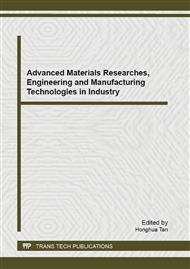p.19
p.24
p.30
p.35
p.40
p.46
p.52
p.58
p.65
Tris (2, 2, 2-Trifluoroethyl) Phosphate (TFP) as Flame-Retarded Additives for Li-Ion Batteries
Abstract:
With high energy density, long cycle life and high voltage Lithium-ion batteries are one of very promising pollution-free power supply. The electrolytes for these batteries consist of flammable organic solvents which are serious hazard under abusive conditions especially for large-scale lithium batteries. To reduce flammability of electrolyte of lithium-ion batteries and resolve safety problem, Tris (2, 2, 2-trifluoroethyl) phosphate (TFP) was synthesized and added into electrolytes as additive. It was found that the SET decreased significantly with the increase of the concentration of TFP. When the concentration is over 20% (vol.) electrolytes are nonflammable. At the same time, with the concentration increasing, the ion-conductivity decreased and the discharge capacity also came down slowly. The electrochemistry stability of LiCoO2 cathode was improved. According to our study, it is possible to find a cosolvent or additive that makes nonflammable lithium-ion electrolyte be put into practice.
Info:
Periodical:
Pages:
40-45
Citation:
Online since:
September 2013
Authors:
Keywords:
Price:
Сopyright:
© 2013 Trans Tech Publications Ltd. All Rights Reserved
Share:
Citation:


